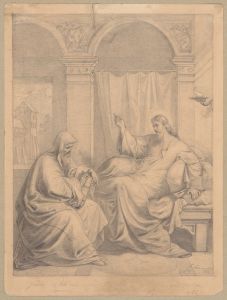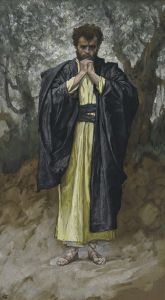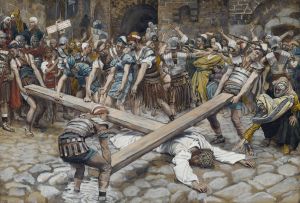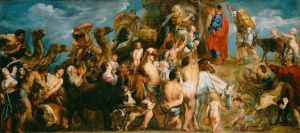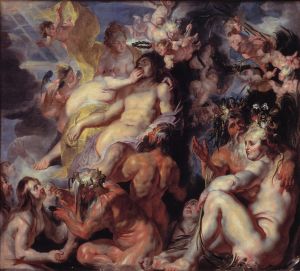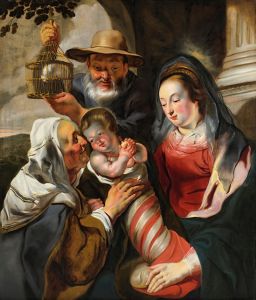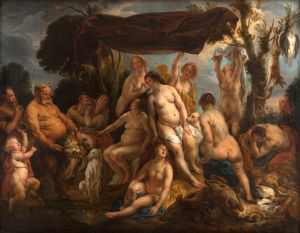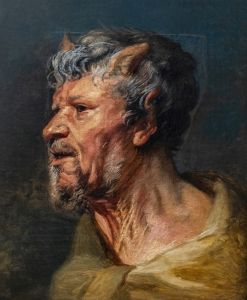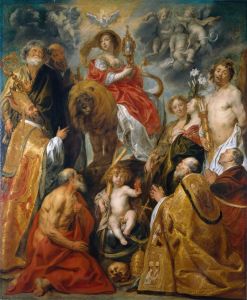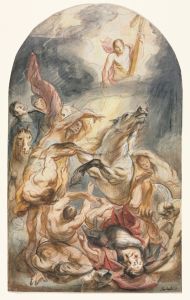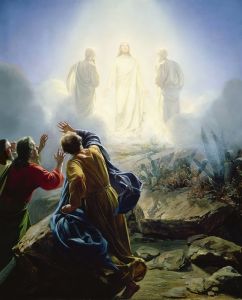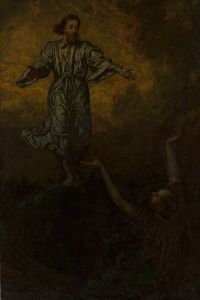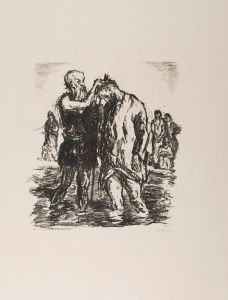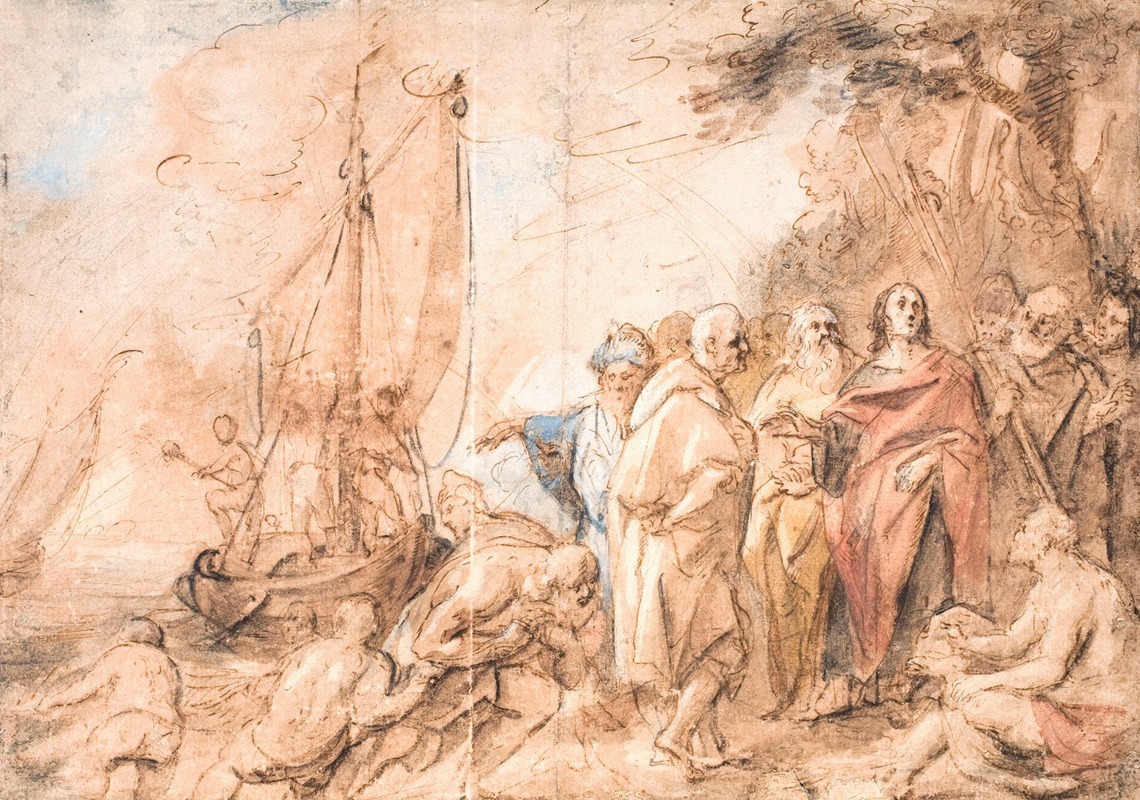
The Calling of Peter and Andrew
A hand-painted replica of Jacob Jordaens’s masterpiece The Calling of Peter and Andrew, meticulously crafted by professional artists to capture the true essence of the original. Each piece is created with museum-quality canvas and rare mineral pigments, carefully painted by experienced artists with delicate brushstrokes and rich, layered colors to perfectly recreate the texture of the original artwork. Unlike machine-printed reproductions, this hand-painted version brings the painting to life, infused with the artist’s emotions and skill in every stroke. Whether for personal collection or home decoration, it instantly elevates the artistic atmosphere of any space.
Jacob Jordaens, a prominent Flemish Baroque painter, is known for his dynamic compositions and vibrant use of color. Among his notable works is "The Calling of Peter and Andrew," a painting that exemplifies his mastery in depicting biblical scenes with emotional depth and dramatic intensity.
"The Calling of Peter and Andrew" illustrates a significant moment from the New Testament, where Jesus Christ calls upon the fishermen brothers, Peter and Andrew, to become his disciples. This event is recounted in the Gospels of Matthew, Mark, and Luke, where Jesus invites them to leave their nets and follow him, promising to make them "fishers of men." Jordaens captures this pivotal moment with a keen eye for narrative detail and human expression.
In the painting, Jordaens employs his characteristic style, marked by robust figures and a rich color palette. The composition is likely to be dynamic, with the figures of Jesus, Peter, and Andrew arranged to convey movement and interaction. Jordaens was known for his ability to infuse his works with a sense of immediacy and vitality, qualities that would have been well-suited to this subject matter.
Jordaens' approach to religious themes often involved a humanistic touch, emphasizing the relatable and emotional aspects of the biblical stories. This would have been evident in "The Calling of Peter and Andrew," where the expressions and gestures of the figures might convey the gravity and transformative nature of the moment. The artist's skill in rendering textures and details would enhance the realism and impact of the scene.
While Jordaens was a contemporary of Peter Paul Rubens and Anthony van Dyck, he developed a distinct style that set him apart. Unlike Rubens, who often depicted idealized figures, Jordaens' characters were more grounded and robust, reflecting his interest in the everyday human experience. This approach would have contributed to the accessibility and emotional resonance of "The Calling of Peter and Andrew."
Jordaens' work was highly regarded during his lifetime, and he received numerous commissions for both religious and secular subjects. His ability to convey complex narratives with clarity and emotional depth made him a sought-after artist in the Baroque period. "The Calling of Peter and Andrew" would have been a testament to his skill in interpreting and visualizing biblical stories in a way that engaged and inspired viewers.
Today, Jacob Jordaens is celebrated as one of the leading figures of the Flemish Baroque movement. His paintings, including "The Calling of Peter and Andrew," continue to be studied and admired for their artistic excellence and contribution to the rich tapestry of European art history. Through his work, Jordaens has left a lasting legacy that reflects both the spiritual and humanistic dimensions of his time.





